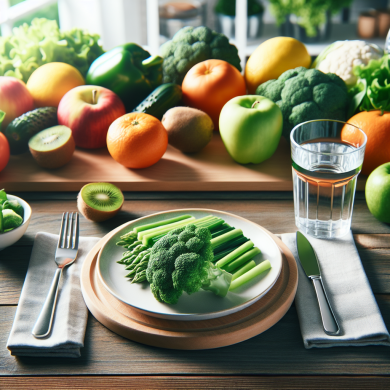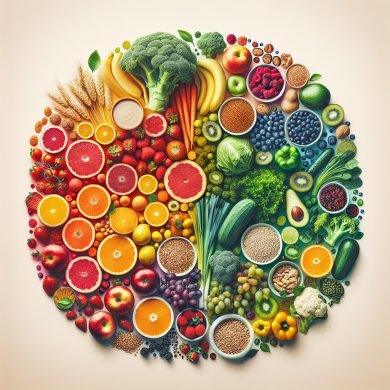Beginner’s Guide to Clean Eating Meal Plans
Introduction to Clean Eating
In today’s fast-paced world, where processed and convenience foods are readily available, the concept of “clean eating” has gained significant popularity. At its core, clean eating is about consuming whole, unprocessed foods. For beginners, transitioning to a clean eating lifestyle can seem daunting, but with the right guidance and meal planning, it can be a seamless and rewarding journey.
What is Clean Eating?
Clean eating is not a diet in the traditional sense, but rather a lifestyle choice that emphasizes the intake of whole, natural foods. It involves choosing foods that are as close to their natural state as possible, minimizing processed foods and artificial ingredients. Clean eating focuses on the quality of the food and its nutritional benefits, promoting a balanced and healthy approach to eating.
Benefits of Clean Eating
Embracing clean eating can lead to numerous health benefits. Some of these include:
- Improved Nutrition: Whole foods are rich in essential nutrients, vitamins, and minerals that support overall health.
- Weight Management: Clean eating can help with weight control by reducing the intake of empty calories and unhealthy fats.
- Increased Energy: A diet based on clean eating provides sustained energy levels throughout the day.
- Better Digestion: High-fiber foods found in clean eating can improve digestive health.
- Enhanced Mental Clarity: The nutrients from whole foods support brain health, leading to improved focus and mental clarity.
Getting Started with Clean Eating
For beginners, transitioning to clean eating requires some planning and a shift in mindset. Here are some steps to help you get started:
Step 1: Educate Yourself
Understanding the principles of clean eating is crucial. Learn about whole foods, their benefits, and how to incorporate them into your meals. Familiarize yourself with reading food labels to identify processed ingredients.
Step 2: Plan Your Meals
Planning is essential in clean eating. Start by creating a weekly meal plan that includes a variety of whole foods. This will help you stay organized and avoid reaching for processed options out of convenience.
Step 3: Shop Smart
When grocery shopping, prioritize fresh produce, whole grains, lean proteins, and healthy fats. Shop the perimeter of the store, where fresh foods are typically located, and avoid the processed food aisles as much as possible.
Step 4: Prepare Your Meals
Set aside time to prepare your meals. Batch cooking and meal prepping can save time and ensure you always have healthy options available. This reduces the temptation to rely on takeout or processed meals.
Step 5: Stay Hydrated
Water is a key component of clean eating. Aim to drink plenty of water throughout the day to stay hydrated and support your body’s natural detoxification processes.
Sample Clean Eating Meal Plan for Beginners
To help you get started, here is a simple clean eating meal plan for one day:
Breakfast: Overnight Oats
- 1/2 cup rolled oats
- 1 cup almond milk
- 1 tablespoon chia seeds
- 1/2 cup fresh berries
- 1 tablespoon honey or maple syrup
Mix all ingredients in a jar and refrigerate overnight. In the morning, stir and enjoy a nutritious start to your day.
Snack: Apple and Almond Butter
- 1 apple, sliced
- 2 tablespoons almond butter
This simple snack provides a balance of carbohydrates, healthy fats, and protein to keep you satisfied until lunch.
Lunch: Quinoa Salad
- 1 cup cooked quinoa
- 1/2 cup cherry tomatoes, halved
- 1/4 cucumber, diced
- 1/4 cup chickpeas
- 1 tablespoon olive oil
- 1 tablespoon lemon juice
- Salt and pepper to taste
Combine all ingredients in a bowl and toss with olive oil and lemon juice. This salad is refreshing and packed with nutrients.
Snack: Carrot Sticks and Hummus
- 1 cup carrot sticks
- 1/4 cup hummus
An easy and satisfying snack that provides fiber and healthy fats.
Dinner: Grilled Chicken with Roasted Vegetables
- 1 chicken breast, grilled
- 1 cup mixed vegetables (e.g., bell peppers, broccoli, zucchini)
- 1 tablespoon olive oil
- Salt, pepper, and herbs to taste
Grill the chicken breast and roast the vegetables with olive oil and seasoning. This meal is high in protein and packed with vitamins.
Evening Snack: Greek Yogurt with Honey
- 1 cup Greek yogurt
- 1 tablespoon honey
A sweet and satisfying way to end the day, rich in protein and probiotics.
Tips for Maintaining a Clean Eating Lifestyle
Once you’ve started on your clean eating journey, maintaining consistency is key. Here are some tips to help you stay on track:
- Set Realistic Goals: Start with small, achievable goals and gradually build up to more significant changes.
- Enjoy the Process: Experiment with new recipes and ingredients to keep your meals exciting and enjoyable.
- Practice Mindful Eating: Pay attention to your hunger cues and enjoy each bite. This can help prevent overeating.
- Stay Flexible: Life happens, and it’s okay to have occasional indulgences. The key is to return to your clean eating habits.
- Seek Support: Join a community or find a buddy who shares your clean eating goals. Support can make the journey easier and more enjoyable.
Conclusion
Clean eating is a sustainable and health-focused approach to nutrition that anyone can adopt. By emphasizing whole, unprocessed foods and planning your meals, you can enjoy the numerous benefits of clean eating. Remember, the journey to clean eating is not about perfection but about making conscious, healthier choices. With dedication and a positive mindset, you can successfully transition to a clean eating lifestyle and enjoy improved health and well-being.















Add comment